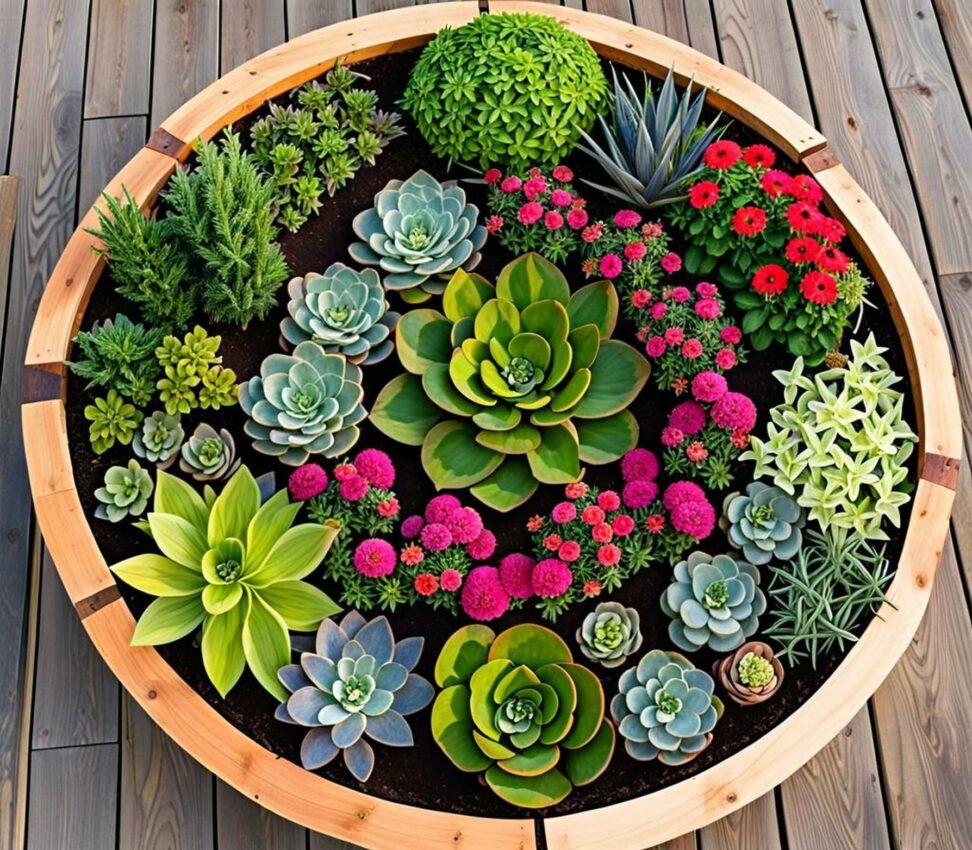The Complete Guide to Circular Raised Garden Bed Ideas
Circular raised garden beds offer a unique, eye-catching addition to backyard gardens. With their rounded shape and clearly defined borders, they create an attractive focal point while also providing functional benefits compared to conventional square or rectangular designs.
Benefits of Circular Raised Beds
Raised garden beds in general offer advantages like improved drainage, easier access without compacting soil, and the ability to control the planting environment. Going with a circular design offers even more benefits:
- More efficient use of space - the curved edges maximize planting area within the footprint.
- Easier access to plants from all sides.
- Better drainage and aeration as excess water doesn't pool in corners.
- Warmer soil that's contained and raised off cold ground.
- Visually appealing focal point that draws the eye.
- Require less material to construct than square beds of the same inner area.
The rounded, organic shape stands out against lawn, stone paths, and straight borders while helping define the garden space.

Planning Your Circular Garden Bed
Careful planning and preparation are key steps before you start building a round raised bed. Consider the factors below when designing your circular garden.
Size and Location
Consider available garden space and what you want to grow when choosing diameter. Small beds around 3-4 feet work well for herb spirals or flowers. For vegetables, opt for at least 5-6 feet diameter so plants have enough room and you can easily reach the center.
Allow enough clearance around the perimeter to comfortably access plants - at least 24-30 inches wider than bed diameter. Position your bed to create an eye-catching focal point visible from different parts of your yard.
Design and Shape
A perfect circle makes a bold geometric statement. Or go for a more free-flowing shape with smooth, rounded curves. Keep edges consistent - inconsistent wobbly lines will be visible. Factor structure into diameter - a diameter divisible by 4, for instance, suits square cinder blocks.
Choosing Materials
Consider durability, cost, and how challenging materials will be to work with. Easier options include:
- Wood planks or logs - versatile and attractive
- Stones, bricks, or blocks - informal cottage look
- Recycled items like tires, bottles, drums - repurposed style
Building Your Circular Raised Bed
Now it's time to tackle construction. We'll cover key steps for DIY builds plus working with curved materials.
DIY Instructions
Refer to guides, videos or plans for your specific material and design. General steps include:
- Mark out shape and diameter
- Level and prepare the base soil
- Arrange and connect materials along perimeter
- Check alignments and cut curves where needed
- Add corner supports or short side walls for stability
- Line inside with landscape fabric if desired
- Fill with good quality garden soil
Working with Curved Materials
Bending straight boards into smooth curves takes finesse. Options include:
- Kerfing - making slashes partway through the wood
- Steaming and clamping wood to reshape it
- joining short straight segments at angles
Take care pre-drilling holes and avoiding splits. For metal pipes, use elbow joints to connect straight lengths.
Arranging Recycled Materials
Stack tires or stones and fill gaps by wedging in pieces. Cinder blocks can be arranged in a running bond pattern. Cut barrels in half, joined end-to-end with sealed gaps.
Finishing Touches
Consider adding:
- Interior gussets or L-brackets to reinforce corners
- Attaching boards around the outside perimeter for a finished look
- Staining, painting or sealing the exterior
Filling and Planting Your Raised Bed
To get your circular garden up and growing, pay attention to soil, plant choices, and arrangement.
Soil Mixes and Fertilizer
Use a quality potting soil or homemade mix amended with compost and organic fertilizer to get nutrients your plants need. Add granular fertilizer per package instructions or mix in compost for sustained release.
Choosing Plants
Consider height, sun needs, and growth habit when selecting.
- Vegetables - leafy greens, radishes, beans, peas
- Herbs - rosemary, thyme, sage, oregano, chives
- Flowers - marigolds, zinnias, impatiens, petunias
Access and Arrangement
Map out planting space on paper first. Place low-growing plants around the edges, medium in the middle, and taller vines or trellised plants in the center so they don't shade others.
Caring for Your Circular Raised Garden
A few adjustments are needed to keep rounded raised beds looking their best.
Watering and Drainage
Raised beds dry out faster than in-ground gardens. Check soil moisture frequently and water thoroughly as needed. Improve drainage by adding 10% sand or pea gravel to the soil mix.
Weeding and Maintenance
Stay on top of weeding and trimming excess growth. Prune wayward plants before they escape over the edges. Cleanup decaying plant debris in fall or early spring.
Getting the Most Out of Your Round Design
Take advantage of 360-degree access for planting, pruning, and harvesting. Use vertical supports and cages to maximize space. Replenish nutrients each season with compost and rotate plant families.
Take a look at these round raised bed ideas and step-by-step building guides to get inspired.
- DIY tutorial for building a raised bed from an old tire
- Beautiful stone and brick circular garden beds
- Creative beds made from repurposed materials like barrels or pallets
- Painted or stained wood round beds to match garden style
- Fun herb spiral beds kids will love
You can make a circular raised bed with some planning and effort. The circular shape offers both aesthetics to enjoy and functionality to nurture your plants. Give your backyard the focal point it deserves with a DIY round raised garden bed!